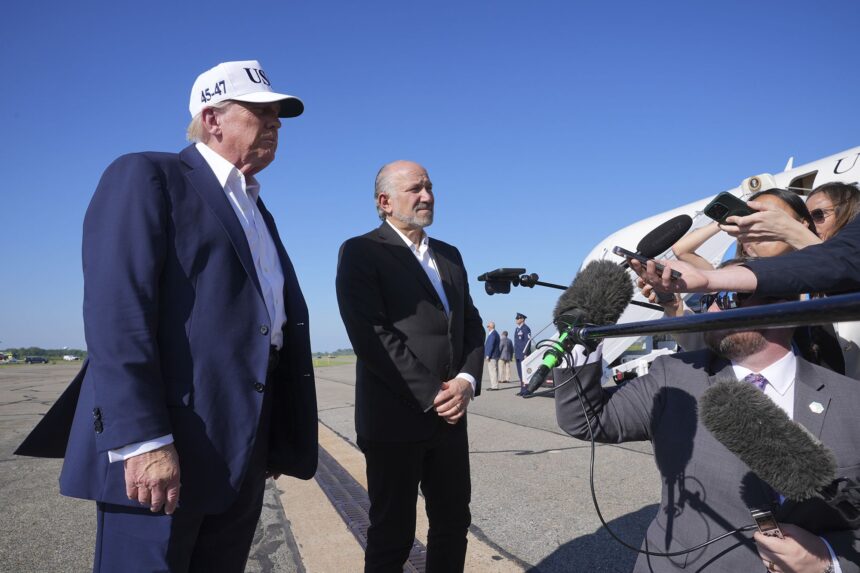1. Overview: A Sharper Tone in Trade Policy Rattles Markets
U.S. stock markets closed under significant pressure on Monday as the Trump administration ratcheted up trade tensions by issuing tariff notices to key allies Japan and South Korea, alongside several other nations. The S&P 500 fell approximately 0.8%, the Dow Jones Industrial Average dropped 0.9%, and the Nasdaq Composite slid 0.9%—marking the biggest single-day declines since mid-June
Key Drivers Behind the Decline:
- Trade escalations: Notification of 25% tariffs on a wide range of Japanese and South Korean imports ahead of an August 1 implementation date.
- Tesla tumbling: Shares fell nearly 6.8%, the worst loss since June 5, following Elon Musk announcing plans to form a new U.S. political party in a public feud with President Trump
- Wider tech and consumer pressure: Broader risk-off sentiment led to a sharp pullback in consumer discretionary, energy, and tech stocks, while defensive names outperformed.
2. Tariff Notices Send Shockwaves Through Markets
A Sudden Escalation
On Monday morning, the White House issued formal letters to Japan and South Korea informing them of new 25% tariffs on various imports, set to take effect August 1 unless bilateral trade agreements are struck Japan and South Korea are not alone—similar notices were dispatched to Malaysia, Kazakhstan, South Africa, Laos, Myanmar, and others, as part of the Trump administration’s “reciprocal tariff” policy.
These moves followed a 90-day tariff pause earlier this year, intended as a period for negotiations—originally expiring July 9 but now extended to August 1
Investor Anxiety
Analysts say this resurgence of trade pressures shattered the calm sentiment following record highs in S&P 500 and Nasdaq late last week. With Japan and South Korea being among America’s major economic allies, the sudden policy shift triggered sell-offs across Asian markets—even as major regional indexes closed mixed .
3. Market Fallout: Sector-by-Sector Breakdown
Tech and Growth Stocks in Retreat
The Nasdaq Composite dropped around 0.9%, with major tech names like Apple, Alphabet, AMD, and Nvidia leading the decline. Trade-sensitive semiconductor stocks bore much of the pressure
Auto & Consumer Discretionary Hit
Consumer discretionary and energy sectors also declined, with S&P Discretionary shedding ~1.25% and energy dipping ~1.04%, while utilities and staples offered moderate safe-haven gains
Secondary Movers
- Circle Internet Group gained ~10% on acquisition strength.
- Palantir saw modest gains (~3.5%)
- Uber rose ~3.3%, breaching new resistance lines

4. Tesla Dives Further Amid Political Drama
Musk’s Political Shift
Tesla shares plunged 6.8%, deepening concerns in a sell-off that erased over $68 billion in market capitalization The drop came after Elon Musk’s announcement that he would launch a new “America Party,” positioning himself in direct opposition to Trump’s GOP.
Market Reaction
Analysts described this as a distraction from Tesla’s core EV narrative. Danny Ives of Wedbush called it “exactly the opposite” of what Tesla investors wanted, casting doubt on Musk’s focus
Contextual Backdrop
The timing was poor—as the market digested tariff shock, investors viewed Musk’s political ambitions as yet another layer of uncertainty, prompting a sell-off .
5. Global Ripples and Risk Sentiment
Asian Markets and Dollar Strength
Despite the U.S. dip, pockets of strength appeared in Asia: Nikkei gained 0.4%, Kospi +1.2%, Hang Seng +0.2%, and Shanghai Composite +0.6%, highlighting investor hope for trade deals
The dollar climbed as safe-haven flows increased; crude oil prices remained steady amid mixed market signals .
Market Volatility and Hedge Moves
The Cboe Volatility Index jumped ~9%, reflecting heightened hedging behavior and risk-off sentiment
6. Economic Implications
Fed Policy Outlook
Investors are wary that the tariff escalation could complicate the Federal Reserve’s strategy on interest rates. While July remains locked in, markets now price in ~60% probability of a September rate cut
Inflation Pressures
New trade taxes risk increasing input costs for goods and supply constraints, challenging the Fed’s inflation management efforts .
7. Political Messaging & Trade Strategy
Trump’s Tariff Timing
By sending notices to major allies just days before the deadline, Trump signals that negotiation opportunities are closing fast. He also hinted at an additional 10% tariff on BRICS-aligned nations, including China and India
Diplomatic Fallout
Japan and South Korea condemned the move as “disappointing and regrettable,” citing deep trade interdependencies with the U.S. Japan’s auto sector, which exports ~20% of its output to America, faces steep headwinds
8. Comparisons to Earlier Market Turmoil
The recent dip echoes the April “Liberation Day” sell-off, when global stocks plunged over 5%. After a tariff delay, markets rallied into June—but this latest announcement undercuts that recovery
9. What to Watch Moving Forward
- Trade Dialogues: Will Washington finalize agreements with Japan, Korea, and others before August 1?
- Market Rebounds: Will volatility subside if political tensions ease?
- Corporate Earnings: Tech and auto sector earnings will be scrutinized for trade-sensitive impacts.
- Fed Updates: June meeting minutes later this week could offer insight into monetary policy amid rising trade risk
10. Conclusion
Monday’s sell-off underscores the delicate balance between aggressive trade policy and market stability. While Wall Street awaits more clarity, investors have clearly grown wary—especially in sectors like tech, auto, and consumer goods. With tariffs on the horizon, the next few weeks will test whether diplomatic efforts can calm markets—or if trade tensions deepen into a broader economic headwind.




